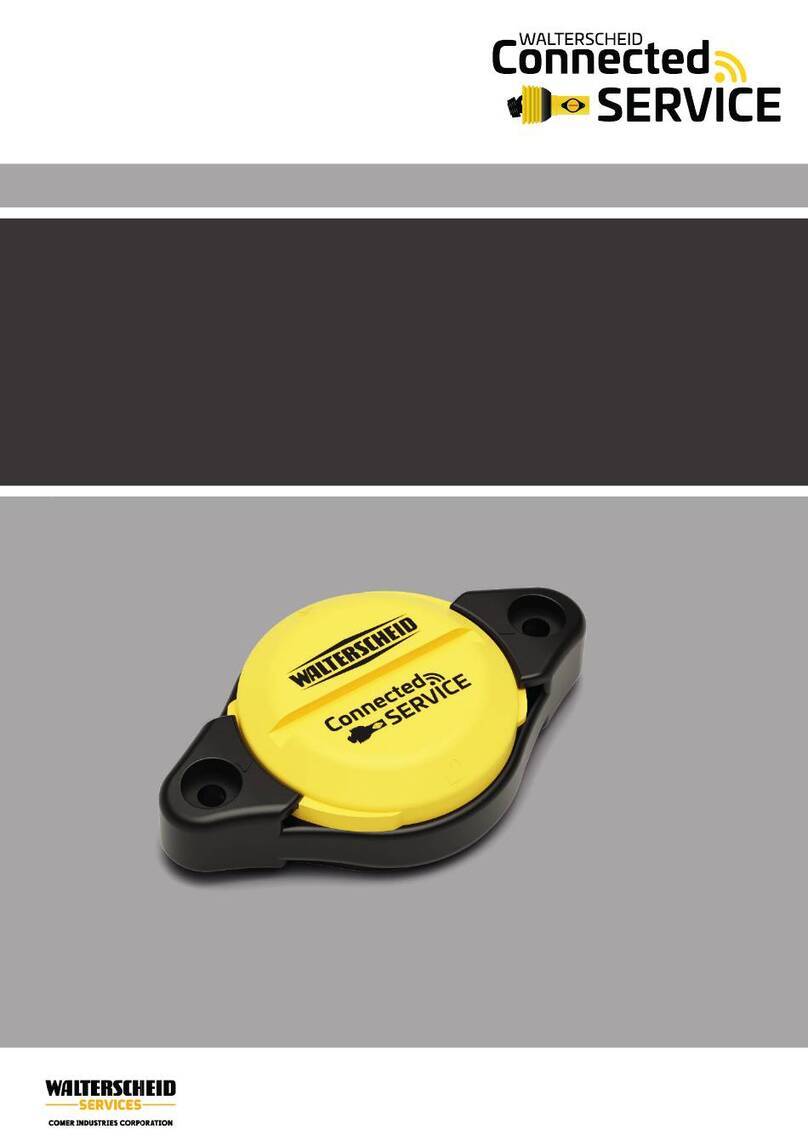
13
• Actuate the control valve to set the top link to
the required service or transport position.
4.3 UNCOUPLING
• Lower the implement to the ground.
ATTENTION
• Make sure that the implement stands safely
(see implement instructions)!
• The top link must not be under load.
FOR TOP LINK HOOKS:
• Use the release cord to release the top link
hook.
• Place the top link in the support clip.
• Retract the piston rod fully by actuating the
control valve, in order to avoid dirtying/da-
maging the piston rod.
Other connections between implement and
tractor must be handled independently of the
coupling and uncoupling processes.
FOR EYEBOLTS:
• Remove the implement-side bolt on the
eyebolt.
• Place the top link in the support clip.
• Retract the piston rod fully by actuating the
control valve, in order to avoid dirtying/da-
maging the piston rod.
Other connections between implement and
tractor must be handled independently of the
coupling and uncoupling processes.
ATTENTION
Touching the hydraulic top link during
retraction is strictly forbidden – due to risk of
injury!
5. MAINTENANCE NOTES
5.1 GENERAL MAINTENANCE NOTES
Normally, the components supplied are mainte-
nance free. However, we recommend the following
checks and/or maintenance work from time to time:
• Make sure that the hydraulic system is not lea-
king. Hydraulic oil must not get into the ground.
• Clean all moving parts as required and apply com-
mercial grease to ensure their smooth operation;
excess grease must be disposed of according to
the applicable regulations; make sure that it does
not get into the ground. Relevant information can
be obtained from your dealer and/or lubricant
supplier. The following additionally applies to
hydraulic top links with hook:
• Check the securing components of the top
link hook and the swivelling eyebolt, e.g.
spring, locking bolt, retaining rings; replace
them, if necessary.
Malfunctions of the locking system are usu-
ally attributable to dirt accumulation.
• Only trained and instructed person should
work with/on the hydraulic top link. The
operator must clearly define the responsibi-
lities of these persons regarding operation,
servicing and maintenance.
Any person to be trained may only work
with/on the hydraulic top link under the
supervision of an experienced person.
The operator may only perform the work
described in these Operating Instructions.
Only specialist workshops may perform
any work or repairs on the hydraulic top
link that require special expertise. Specialist
workshops have the qualified personnel and
suitable aids (tools) necessary to perform this
work correctly and safely.
This applies to all work not described in these
Operating Instructions.
Immediately replace any components that
are not in perfect condition.
When doing so, use only original parts
from the manufacturer, or spare parts, wear
parts and consumables approved by the
manufacturer. When using spare parts and
wear parts from third-party manufacturers,
or nonapproved consumables, it cannot be
guaranteed that they are designed and ma-
nufactured to withstand the relevant stresses
and comply with safety requirements.
The manufacturer accepts no liability for
damage or losses caused by the use of
nonapproved spare parts, wear parts and
consumables, or repairs performed by non-
approved persons.
5.2 SPECIAL MAINTENANCE NOTES FOR
THE HYDRAULIC TOP LINK WITH SHOCK
ABSORBER
• Ensure the screw plug on the piston rod is firmly
tightened.
• The gas pressure should be checked by a specia-
list workshop at least 1x per year.




























